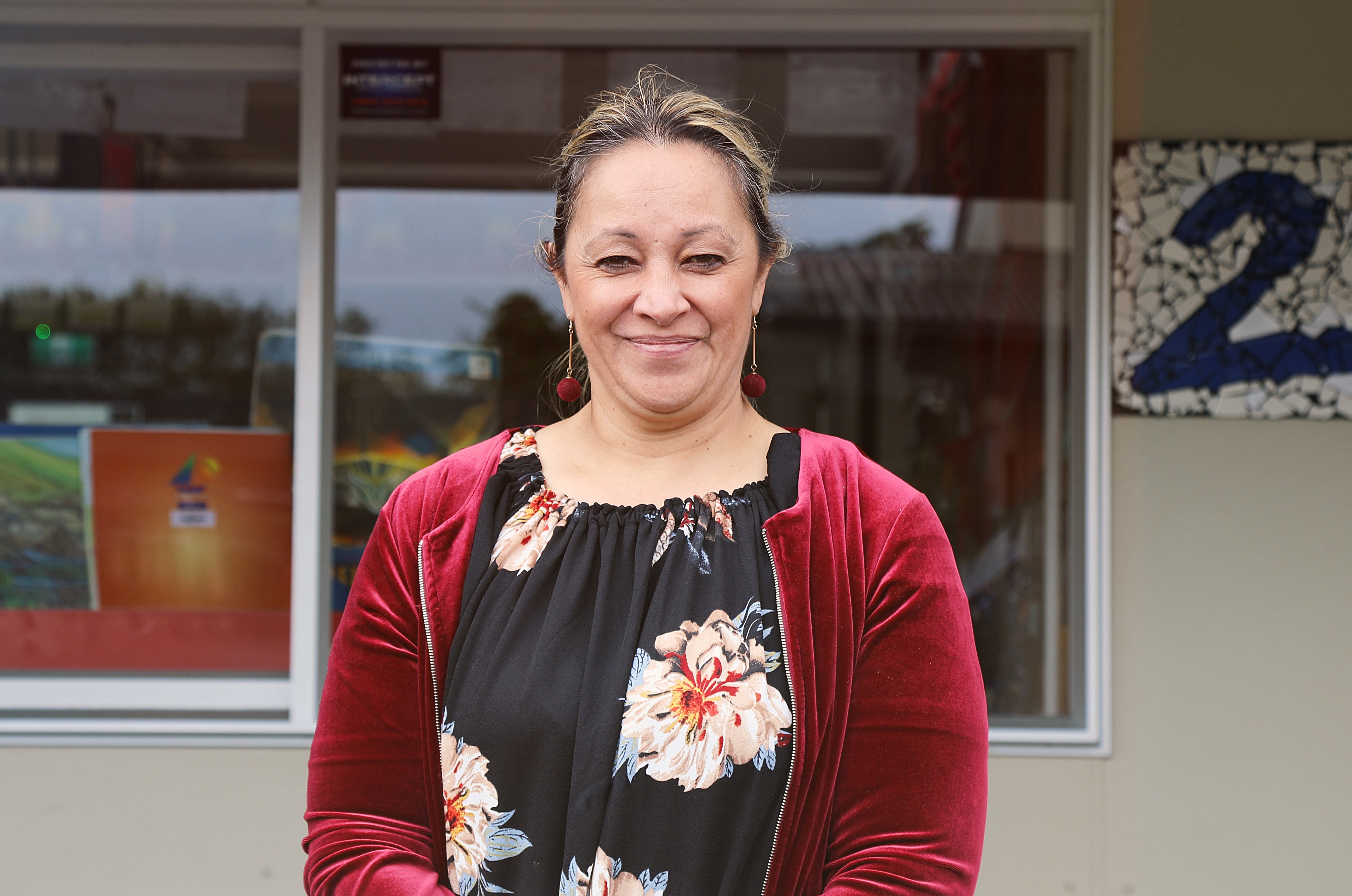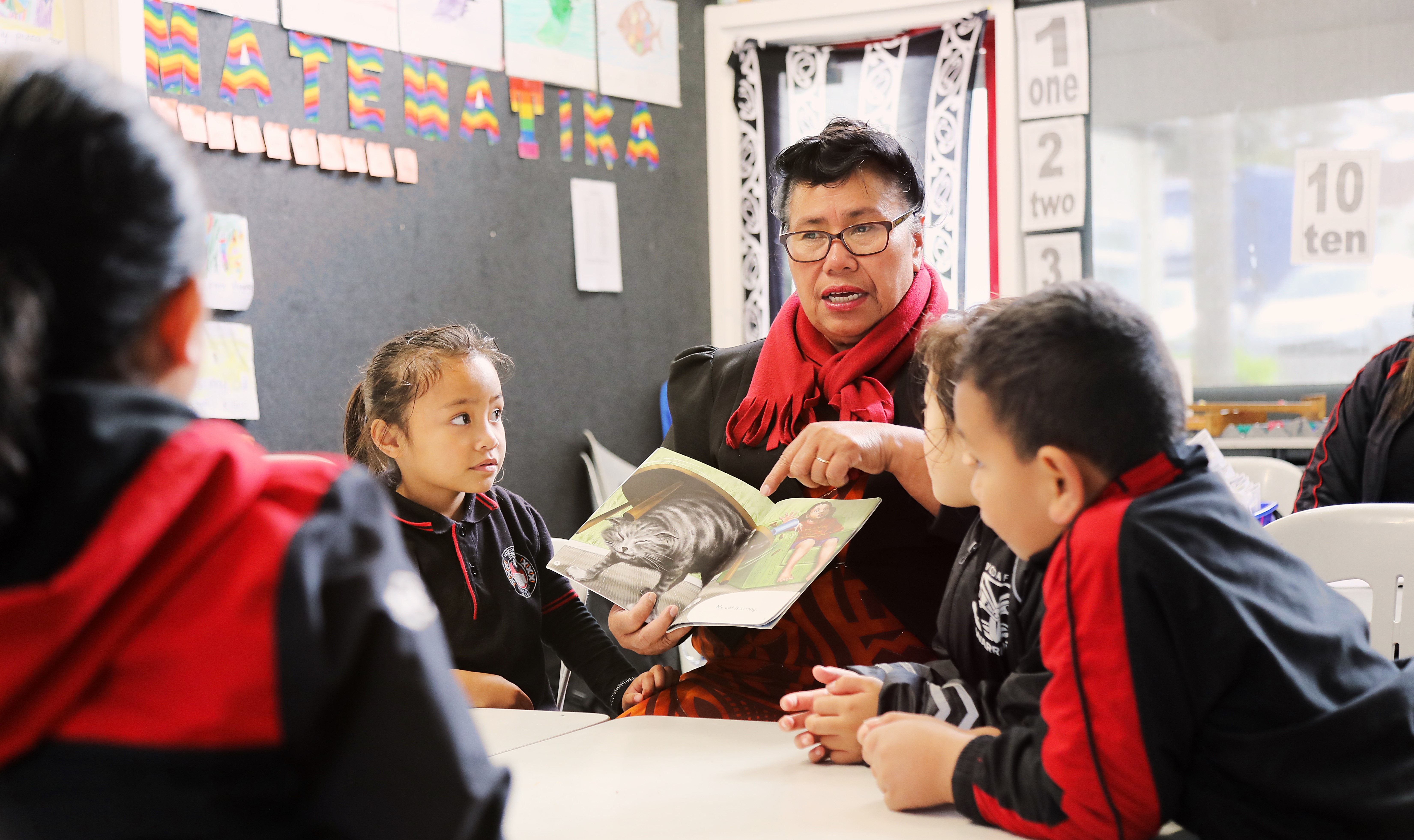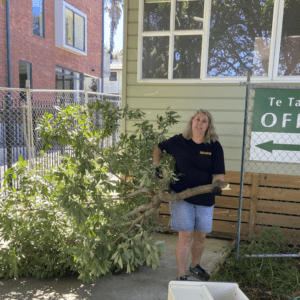In August 2019, the Education Review Office reported to government on the state of Pacific bilingual education. It warned that a burgeoning population of Pacific children, without exposure to their language, might soon occupy a similar situation to Māori in the 1970s, “fighting to bridge an inter-generational language gap in the community.”
At the same time, the paper described existing immersion and bilingual programmes in schools as under-resourced, uncoordinated and under-supported.
In response to this grim bird’s-eye assessment, Ako visited two very different school communities in Auckland that are focussed on growing Pacific New Zealanders who are safe and secure in their culture.
Nerra Lealiifano-Tamarua considers herself blessed.
“I am one of the lucky generation of Pasifika New Zealanders who learned to walk in two worlds. I’m confident and successful as a Samoan and as a Kiwi – and that’s what I want for the students I teach.”
Lealiifano-Tamarua talks as she surveys her classroom, which sits in May Road School’s Samoan bilingual unit. She is Senior Leader here, and around 25 children are quietly working away at a writing task, some assisted by a teacher aide.
“My generation had parents who spoke our first language exclusively and that was reinforced by the church, which was the mainstay of our community,” she says. “When I started school, I was strong in my language and culture. These kids come here from a different space.”
Some parents of these city-fringe Auckland students have limited or no functional Samoan language, and have lost much of their connection with their culture.
Some parents of these city-fringe Auckland students have limited or no functional Samoan language, and have lost much of their connection with their culture.
“They’ve experienced a lot of racism and negativity growing up, so now they are seeking out something better for their kids by re-engaging with their language and culture.”
Parental demand saw the establishment of a single bilingual classroom, which has now grown to three classes. Together they make up around a third of the school roll. For the children entering at Year 1, English is usually the strongest language.
“It’s the default language because that’s the language their parents speak,” says Lealiifano-Tamarua. “If the family is active in the church, they will have stronger language and some comfort in the Samoan way. Some will have come through a Samoan [early childhood centre], but we are building from a fairly low language base.”
That’s why the focus at May Road School is not exclusively on language.
“People assume that it’s language, language, language. Sure, it’s an important component, but not the overriding one. Here we have a whole-child approach. We are creating a space where children can be Samoan.”

Lealiifano-Tamarua turns to the class and begins to chant a Samoan proverb, which the children complete in unison.
“E iloa ie teine ma le tama Samoa I lana tu, I lana nofo, I lana savali, I lana tautala ma lana amio,” they call enthusiastically before returning to their work. She translates for us: “You will know a Samoan girl or boy by the way they stand, sit, walk, talk – and by their behaviour.”
Within the classroom, most instructions are delivered in Samoan, as are any corrections. Even when children do not understand the words, they pick up the nonverbal clues.
During class discussion, Lealiifano-Tamarua offers ongoing translation so that all children can participate, no matter their language proficiency. When a new topic of study is introduced, she will often front-load in English before building a vocabulary of Samoan words that routinely populate the whiteboard and are used in handwriting and reading. The class uses dual-language readers, which are sent home for parents to share with their children. Some of these books are about everyday events in Samoa.
“Parents are learning Samoan language through their children,” says Lealiifano-Tamarua. “When they come into the classroom to drop off their kids, we chat, and I can hear the development of their language and offer them support to develop further.”
“Parents are learning Samoan language through their children.”
Nerra Lealiifano-Tamarua
Api Cowley-Lupo is one of those parents. She’s fluent in Tongan, with a Samoan husband who doesn’t speak the language. She wants her children to be connected to the language and values of both heritages.
“That’s why I brought them here,” she says. “I want my kids to be able to communicate with grandparents from both sides. Since coming here, they’ve developed a new confidence. They’re not shy to speak Samoan at family gatherings. They’ll step up and say grace. People are learning from them, including their dad.”

Kirita Auva‘a-Key tells a similar story. She enrolled her daughter in the bilingual unit, hoping to give the child a different experience from her own.
“I was part of a generation that felt there was something missing. For me, there was always a disconnect. You know you’re Samoan, but without the language you feel you’re not a real Samoan – and I used to hear things like, ‘Plastic, you’re a plastic Samoan’. I really want it to be different for my daughter.”
I was part of a generation that felt there was something missing.”
Kirita Auva‘a-Key
Auva‘a-Key hasn’t been disappointed. Her daughter is developing confidence – and not only in the Samoan language.
“The school is reinforcing the values and morals we teach at home as well,” she says. “I went through a mainstream education, and school was very different from home in terms of expectations and behaviour. That was hard for me – but for my daughter, I can see she’s comfortable with who she is. Being Samoan is so much more than being able to speak the language.”
Auva‘a-Key can also view bilingual education up close. For the past couple of years, she has worked as a teacher aide at May Road, sitting alongside the children while they all learn the language.
“Like the kids, I have no choice but to engage with the language because it is everywhere.”
She speaks, too, of the way Samoan cultural norms permeate the classroom. There is a real feeling of family or aiga, where children with stronger understandings support and guide others. Such an environment can have a profound effect on a child coming from mainstream. Even if they had been getting in constant trouble before, they soon calm down.
“It’s not because he or she is intimidated,” says Auva‘a-Key. “It’s that they’re not having to have two selves.”

Lealiifano-Tamarua agrees. “You can see kids coming from mainstream [who are] beginning to unpack who they are as a Pasifika child; discovering who they might be.”
By the time they reach the senior school, students in the bilingual unit are performing at levels comparable to their mainstream counterparts. They are able to carry their Samoan language into the digital classrooms that operate in the upper school.
However, Lealiifano-Tamarua does worry that when they leave primary school there are limited options for students where their language and culture will be supported.
“It is this aiga culture, the feeling of family, that our parents say the children miss most as they go on to intermediate and secondary school,” she says.
Twenty kilometres south of May Road, Sonia Johnston is principal of Roscommon School. Like May Road School, Roscommon has a significant Samoan population, but one that is different from the Mt Roskill school.
“Eight years ago, when we first began our unit, our Samoan parents were largely first-language speakers,” says Johnston. “Over time there has been a slight shift, but most of our Samoan children still come from homes where Samoan is the main language spoken.”

Like May Road, the impetus for the establishment of a bilingual programme at Roscommon came from the parent community, growing out of regular meetings with the school’s ethnic groupings.
“Those meetings had a real, empowering effect on our parents and, following a Samoan Language Week, a group of them came and asked if we could set up a unit.”
It was a request that Johnston wasn’t fully prepared for. Though she was about to start studying bilingual papers at university, she was unsure about such a proposal.
“Some of my reservations were based upon the variation in the quality of provision I had seen in my own experience, and some was my own lack of understanding of bilingualism,” she says. “However, I said to the parents that we would unpack the evidence together as to what a successful bilingual education would look like. So that’s what we did.”
“I said to the parents that we would unpack the evidence together as to what a successful bilingual education would look like. So that’s what we did.”
Sonia Johnston
The journey Johnston and her community went on overturned the myth that mastery of English was paramount. Rather, the research showed that for Samoan children, bilingualism and biliteracy were keys to success. What finally settled things, however, was when the community convinced Johnston that the right leadership was there to lead such innovation.
At an emotional meeting, Johnston told the parents that she didn’t feel Samoan enough to drive the process. “There came a point where I realised that my reservation was partly because of my personal feelings about being a Samoan who could not speak the language,’ says Johnston. “I felt that I wasn’t the person who could lead the process.”
She was immediately embraced by the community. They told her that she was one of them and that they trusted her to show the way. From that point, Roscommon School’s bilingual Samoan unit was born, starting with four classes and quickly growing to seven.
The unit was founded upon two principles: the maintenance of the Samoan language, culture and identity, and the empowerment of children.
“Our parents were saying they wanted our children to be strong in their [Samoan] identity, but also wanted them to succeed in New Zealand society – not just as individuals, but as members of a family and aiga. Part of that is about empowering parents and communities by engaging them in their children’s education.”
Teacher Pisa Fua admits that the first year was a lot of hard work for staff in the unit.
“We had spent years in our classrooms using English as the first language, so it was a big change. Suddenly, we had to plan in two languages, and even though I’m a native speaker it wasn’t easy. I realised that I had been losing my language, replacing Samoan words with English.”

Fua and her colleague Simoe Toleafoa agree that support from management and community has made the experience a success for teachers, students and community alike. Teachers plan as a group and share the load of creating resources. They have also experienced a resurgence of their own fluency in the Samoan language.
“When we started, teachers suddenly had permission to use their first language,” says Johnston. “I hadn’t anticipated how important that would be for them. We’d always used Samoan in the mainstream to support Samoan children, but this was quite different. There was a freeing up.”
There has been a similar liberating effect for parents, especially those with English as their second language. “Anxiety has been reduced,” says Johnston. “Parents don’t have the worry of coming to school, where often it can be an environment foreign to their own experience. Here, they can freely use their own language to access information about their child’s learning and our education system in general.”
“We have a good turnout at parent interviews,” says Fua. “Parents are able to discuss their children’s learning in their first language. They now know so much more about their children’s learning and how they are doing.”
“Parents are able to discuss their children’s learning in their first language. They now know so much more about their children’s learning and how they are doing.”
Pisa Fua
Johnston says that the connection of teachers to the parent community has continued to be strengthened over the years.
“Teachers feel that they carry the weight of the culture on their shoulders. They are part of the dream of the Pacific people, trying to reverse trends and mindsets and racism. We are saying to our kids, ‘You are okay. You can do this. Don’t let anyone tell you that you can’t learn in a way that affirms who you are.’”
At Roscommon, the first language – Samoan – is consolidated and built upon in the early years, making up around 80 percent of language used. Over time, the amount of English usage increases, so that in the senior school Samoan makes up around 20 percent. Part of the success of the bilingual project has been due to its extension to include Years 7 and 8.
“That was a long fight,” says Johnston. “We had to persuade the ministry that the eight-year pathway was critical to the success of our students. We produced the evidence and had strong backing from the parents. In the end, I think it was the level and quality of parent support that got us over the line.”

The principal and teachers agree that running a successful bilingual unit can be challenging. Finding teaching resources is an ongoing battle that has in part been addressed by schools sharing through the Pasifika Early Literacy Project (PELP).
Funding is also an issue. While Roscommon School’s Māori bilingual unit attracts additional government funding, including the Māori Immersion Teaching Allowance (MITA) for kaiako, its Pacific bilingual unit get no such funding. The school sees this as an “anomaly” and has made representations to ministers about it, but does not see it as a divisive issue.
“There’s no rivalry,” says Johnston. “Our language units have the same kaupapa. They do the same work, share the same story in trying to revitalise and sustain the language, and are working to turn that story around. They are very supportive of each other.”
While the school is lucky in maintaining quality bilingual teachers, Johnston knows of other schools that struggle, particularly when it comes to accessing qualified relievers. It was this limited availability of quality, qualified language teachers that impacted on Roscommon being unable to sustain its Tongan bilingual unit.
Eight years on from the initial discussions about pursuing Pacific bilingual education, Sonia Johnston and her staff are satisfied. They acknowledge the work of other schools, like Finlayson Park School up the road, which provided leadership for the bilingual education movement. And every year, Roscommon School proudly farewells the graduates of their own unit.
When they leave at the end of Year 8, Roscommon’s Samoan students are bilingual and biliterate. Just as importantly, they are ambassadors for the language.
Sonia Johnston sums it up this way: “We say to the kids, ‘Yes, you are coming here to learn, but you are also coming here to lead. It is your job to keep the Samoan language, culture and values alive for the next generation.’ When you come here every day, you know the work is worthy work.’’



